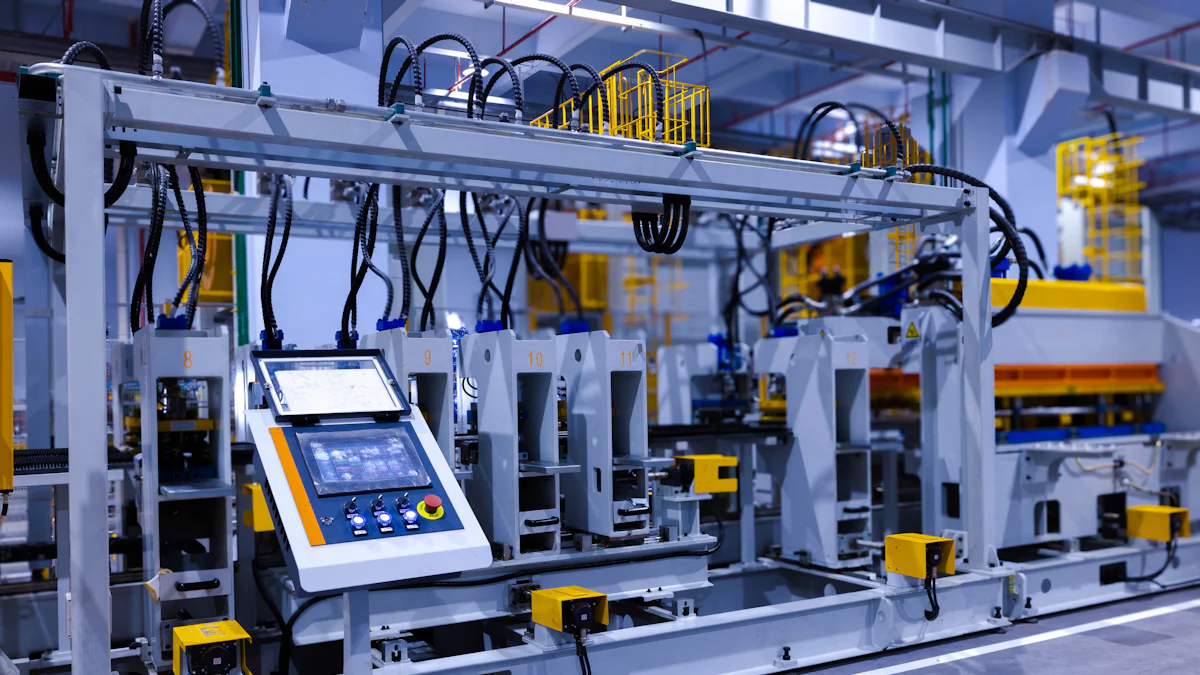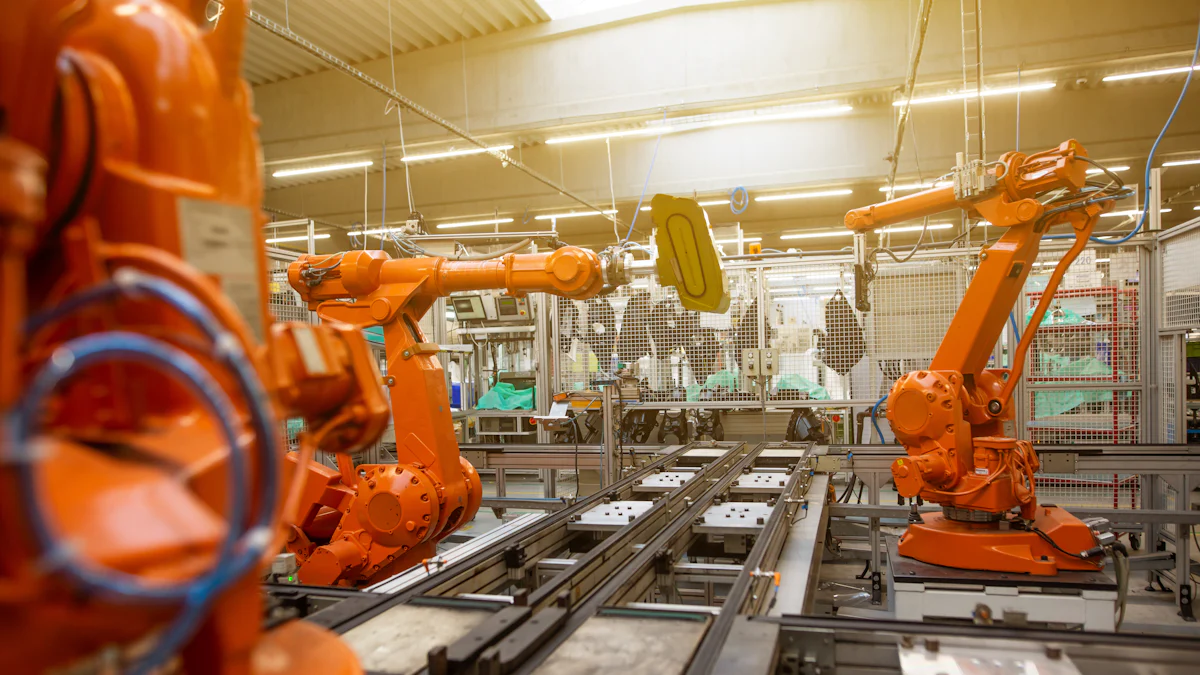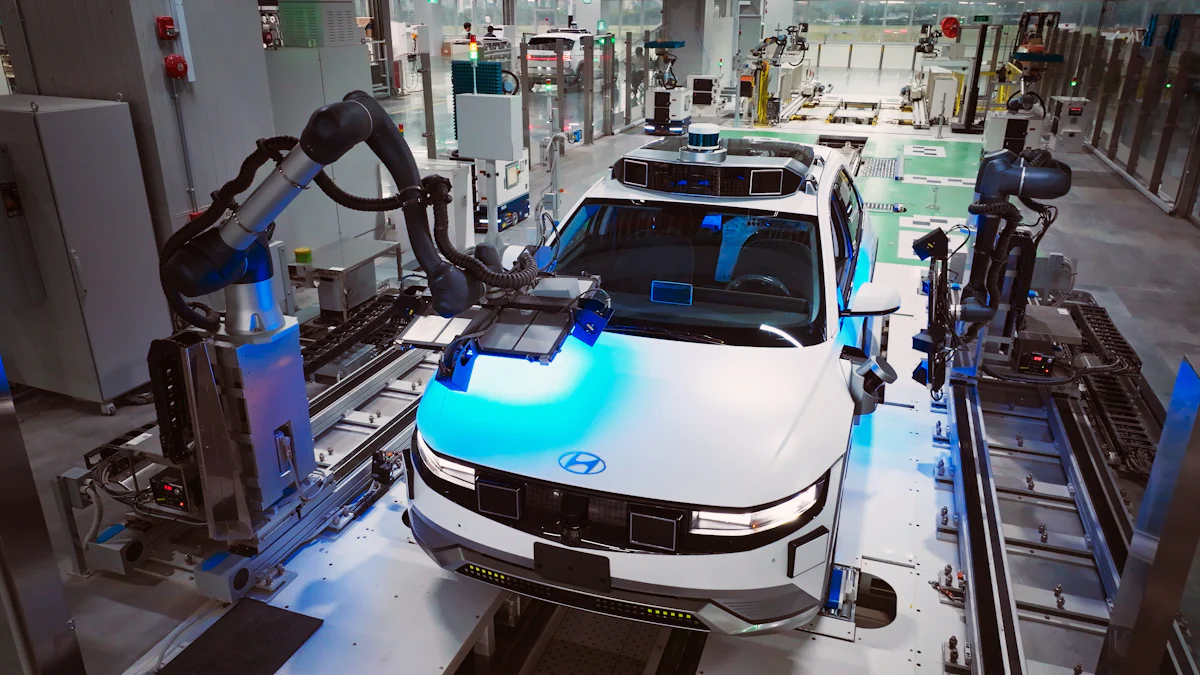The impact of technology manufacturing on the industry

Technology manufacturing has revolutionized the industry, transforming traditional processes into highly efficient and automated systems. Understanding the impact of these advancements is crucial for stakeholders aiming to stay competitive. Historically, manufacturing has evolved through significant phases, from the mechanization of labor during the First Industrial Revolution to the introduction of assembly lines in the Second Industrial Revolution. Today, the integration of digital technologies like AI and IoT marks the dawn of Industry 4.0, promising unprecedented levels of productivity and innovation.
Evolution of Technology in Manufacturing

Early Innovations
Mechanization and the Industrial Revolution
The First Industrial Revolution marked a significant shift in manufacturing. Mechanization replaced manual labor, leading to increased production rates. Steam engines powered factories, enabling mass production. This period laid the groundwork for modern technology manufacturing.
Introduction of Assembly Lines
The Second Industrial Revolution introduced assembly lines. Henry Ford popularized this method, which revolutionized automobile production. Assembly lines allowed for specialization of tasks, reducing production time and costs. This innovation set the stage for future advancements in technology manufacturing.
Digital Revolution
Automation and Robotics
Automation and robotics have transformed manufacturing processes. Robots now perform repetitive tasks with high precision. Automation reduces human error and increases efficiency. Factories use robots for welding, painting, and assembling products. These advancements in technology manufacturing enhance productivity and product quality.
Computer-Aided Design (CAD) and Manufacturing (CAM)
CAD and CAM systems streamline product design and manufacturing. Engineers use CAD software to create detailed 3D models. CAM software then translates these models into machine instructions. This integration optimizes the production process, reducing errors and material waste. Technology manufacturing benefits greatly from these tools, improving overall efficiency.
Current Trends
Internet of Things (IoT)
IoT connects devices and systems within manufacturing environments. Sensors collect real-time data, enabling predictive maintenance. IoT enhances supply chain management by providing visibility into inventory levels and production status. Technology manufacturing leverages IoT to improve decision-making and operational efficiency.
Artificial Intelligence (AI) and Machine Learning
AI and machine learning revolutionize technology manufacturing. AI algorithms analyze vast amounts of data to optimize production processes. Machine learning models predict equipment failures, reducing downtime. AI-driven systems enhance quality control by detecting defects early. The integration of AI in technology manufacturing drives innovation and competitiveness.
Benefits of Technological Advancements
Increased Efficiency
Reduced Production Time
Technological advancements have significantly reduced production times. Automation and robotics allow machines to work faster and more precisely than human labor. For example, additive manufacturing, also known as 3D printing, has cut overall production times by 50%. Digital twin technology, which creates a virtual replica of physical assets, has led to a 30% decrease in time-to-market. Automation has reduced assembly time by 25%, allowing manufacturers to produce goods more quickly and meet market demands efficiently.
Cost Savings
Implementing modern technologies has resulted in substantial cost savings for manufacturers. Automation and digital solutions have lowered production costs by up to 70% in some cases. Machines and automation operate around the clock, reducing the need for human labor and associated costs. 3D printing technology has also lowered costs compared to traditional manufacturing methods. These advancements enable manufacturers to produce high-quality products at a lower cost, enhancing their competitiveness in the market.
Improved Quality
Precision and Accuracy
Technological advancements have greatly improved the precision and accuracy of manufacturing processes. Automation and robotics perform tasks with high precision, reducing human error. AI and machine learning analyze vast amounts of data to optimize production processes and detect defects early. CAD and CAM systems streamline product design and manufacturing, ensuring that products meet exact specifications. These technologies enhance the overall quality of manufactured goods, leading to higher customer satisfaction.
Consistency in Production
Modern technologies ensure consistency in production, which is crucial for maintaining product quality. Automation and robotics perform repetitive tasks with uniform precision, eliminating variations caused by human factors. IoT devices collect real-time data, enabling predictive maintenance and minimizing downtime. AI-driven systems monitor production processes continuously, ensuring that products are consistently produced to the highest standards. This consistency enhances the reliability and reputation of manufacturers.
Enhanced Flexibility
Customization and Personalization
Technological advancements have enabled manufacturers to offer greater customization and personalization of products. Automation and digital solutions allow for flexible production processes that can be easily adjusted to meet specific customer requirements. 3D printing technology enables the production of customized products without the need for expensive molds or tooling. This flexibility allows manufacturers to cater to diverse customer needs and preferences, enhancing their market appeal.
Rapid Prototyping
Rapid prototyping has become a reality thanks to modern technologies. 3D printing and CAD/CAM systems enable manufacturers to quickly create prototypes and test new designs. This rapid iteration process reduces the time and cost associated with developing new products. Manufacturers can bring innovative products to market faster, gaining a competitive edge. Rapid prototyping also allows for quick adjustments based on customer feedback, ensuring that final products meet market demands effectively.
Challenges and Risks
High Initial Costs
Investment in New Technologies
Manufacturers face significant financial challenges when investing in new technologies. Advanced machinery and software require substantial capital outlay. Companies must allocate funds for purchasing, installing, and maintaining these systems. The high cost often deters small and medium-sized enterprises from adopting innovative solutions. Despite the potential long-term benefits, the initial investment remains a major barrier.
Training and Skill Development
The integration of new technologies necessitates extensive training and skill development. Employees must learn to operate advanced machinery and software. This process involves time and financial resources. Companies must invest in training programs to ensure a skilled workforce. The rapid pace of technological advancement requires continuous learning and adaptation. Without proper training, the efficiency and effectiveness of new technologies diminish.
Cybersecurity Threats
Data Breaches
The increased reliance on digital technologies exposes manufacturers to cybersecurity threats. Data breaches pose a significant risk to sensitive information. Hackers target manufacturing systems to steal valuable data. This includes proprietary designs, production processes, and customer information. Companies must implement robust security measures to protect against unauthorized access. Failure to do so can result in severe financial and reputational damage.
Intellectual Property Theft
Intellectual property theft is another critical concern for manufacturers. Cybercriminals exploit vulnerabilities in digital systems to steal proprietary information. This includes patents, trademarks, and trade secrets. The loss of intellectual property undermines a company's competitive advantage. Manufacturers must invest in advanced cybersecurity solutions to safeguard their innovations. Protecting intellectual property is essential for maintaining market leadership.
Workforce Displacement
Job Losses
Technological advancements lead to workforce displacement. Automation and robotics replace manual labor, resulting in job losses. Machines perform tasks previously done by humans, reducing the need for a large workforce. This shift creates economic and social challenges. Workers must find new employment opportunities in an evolving job market. Companies must address the impact of automation on their employees.
Need for Reskilling
The need for reskilling becomes paramount as technology transforms the manufacturing landscape. Workers must acquire new skills to remain relevant in the industry. Companies must provide reskilling programs to help employees transition to new roles. This includes training in advanced technologies and digital tools. Reskilling initiatives ensure that the workforce adapts to changing demands. Investing in employee development fosters a resilient and capable workforce.
Case Study: Kordsa's Journey to Operational Excellence
Kordsa's digital transformation journey exemplifies successful adaptation to new technologies. The company invested in advanced digital solutions to optimize operations. Training programs equipped employees with the necessary skills to operate new systems. This approach enhanced operational efficiency and set new standards for excellence. Kordsa's experience highlights the importance of investment in technology and workforce development.
Future Prospects

Emerging Technologies
Quantum Computing
Quantum computing promises to revolutionize technology manufacturing. Quantum computers process information at unprecedented speeds. These machines solve complex problems that classical computers cannot handle. Manufacturers will benefit from faster simulations and optimizations. Quantum computing will enhance material discovery and product design.
Advanced Materials
Advanced materials will drive innovation in manufacturing. Researchers develop materials with superior properties. These materials offer increased strength, lighter weight, and better durability. Manufacturers use advanced materials to create high-performance products. Industries such as aerospace and automotive will see significant advancements.
Sustainable Manufacturing
Green Technologies
Green technologies promote sustainable manufacturing practices. Renewable energy sources power manufacturing facilities. Solar panels and wind turbines reduce reliance on fossil fuels. Energy-efficient machinery minimizes environmental impact. Green technologies support eco-friendly production processes.
Circular Economy
The circular economy emphasizes resource efficiency. Manufacturers design products for longevity and recyclability. Waste materials are repurposed into new products. This approach reduces waste and conserves resources. The circular economy fosters sustainable growth in the manufacturing sector.
Global Implications
International Trade
Technological advancements influence international trade dynamics. Automation and modern technology make processes more efficient. Countries with advanced manufacturing capabilities gain a competitive edge. Trade policies adapt to new technological realities. Global supply chains become more interconnected and resilient.
Economic Growth
Technology manufacturing drives economic growth. Innovations increase productivity and reduce costs. Companies invest in new technologies to stay competitive. Job creation occurs in high-tech sectors. Economic growth results from improved manufacturing capabilities.
Steve, an expert in manufacturing technology, states that new technology, such as additive manufacturing, will change global patterns in manufacturing. The quantities of data available from increasingly prevalent sensors in manufactured products will also play a significant role.
Manufacturers profit from predictive analytics and machine learning. Properly estimating demand and managing inventory effectively reduces waste. These tools make manufacturing more flexible, responsive, and cost-effective.
The blog has highlighted the transformative impact of technology manufacturing on the industry. Key advancements include automation, robotics, CAD/CAM systems, IoT, and AI. These technologies have enhanced efficiency, improved product quality, and enabled greater flexibility in production processes.
Technology manufacturing continues to drive innovation and competitiveness. The integration of emerging technologies like quantum computing and advanced materials promises further advancements. Sustainable manufacturing practices and the circular economy will shape the industry's future.
Industry stakeholders must adapt and innovate. Embracing new technologies and investing in workforce development will ensure continued growth and success in the evolving manufacturing landscape.
See Also
Exploring How Technology Influences Market Trends
Automated Future: Advantages of High-Tech Manufacturing Warehouses
Dispelling Myths in High-Tech Manufacturing Automation
Efficiently Addressing High-Tech Manufacturing Supply Chain Challenges
Unlocking Triumph: Understanding High-Tech Manufacturing Consulting
